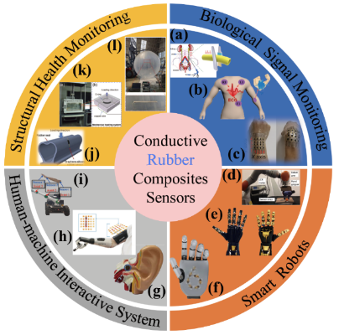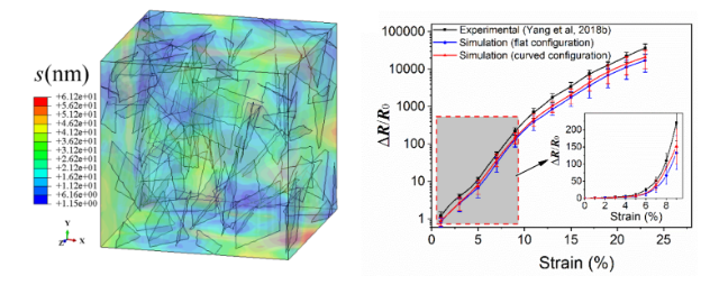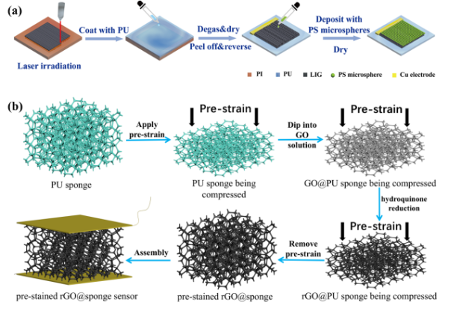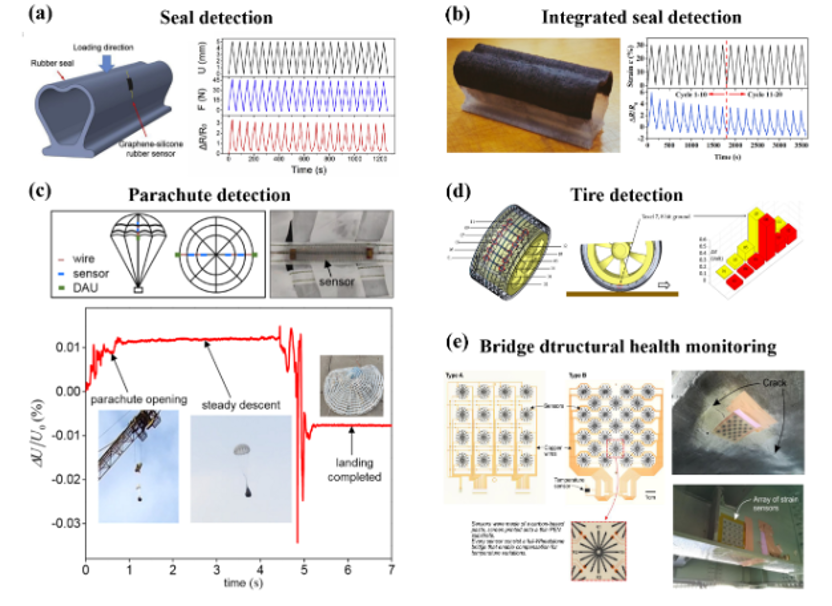The research group led by Yang Heng from Beijing Institute of Technology has achieved remarkable results in the field of flexible composite sensors. Their recent review paper, "Structure driven piezoresistive performance design for rubbery composites-based sensors and application prospect: a review" published in Acta Mechanica Sinica (English Edition), was selected as Editor's Pick and spotlighted on the AMS Journal of Mechanics in English WeChat official account.
Research Background
Flexible composite strain and stress sensors have drawn extensive attention due to their high sensitivity, wide strain range, and diverse forms. However, applications in fields like wearable electronics, intelligent machinery, and structural health monitoring demand sensors with enhanced performance to endure large deformations and extreme temperatures. Establishing an electromechanical sensing model and revealing the structure-property relationship for conductive rubber composites to overcome the bottleneck in simultaneously improving sensitivity, measurement range, linearity, and stability remains a challenging task.

Fig.1 Application fields of flexible strain/pressure sensors: (a-c) Biosignal monitoring, (d-f) intelligent robots, (g-i) human-computer interaction systems, (j-l) structural health monitoring.
Research Progress
·Theoretical Modeling: The strain-resistance model based on the tunneling effect and conductive network has been developed. The team also established a strain-resistance model considering viscoelasticity and an electromechanical coupling numerical prediction model, enabling the characterization of sensing performance during the entire loading and unloading process and the prediction of nonlinear electromechanical behavior.
·Sensing Performance Design: Methods for regulating sensing performance through internal conductive network design, macroscopic composite structure design, and surface conductive layer structure design have been initially established. These include designs such as cross-linked networks, interconnected networks, isolation networks, three-dimensional template networks, and double-interconnected networks for internal conductive networks; polymer structure designs like fiber, porous, and auxetic structures; and conductive layer designs such as crack, wrinkle, fish-scale, and buckling structures. The proposed collaborative design method of multi-level structures and deformation control offers a new perspective for enhancing both sensor sensitivity and range.
·Application Exploration: Preliminary work has been carried out on the application of rubber composite sensors in human-computer interaction interfaces, human motion state monitoring, and aerospace structural health monitoring. The team has achieved initial verification of the application of rubber sensors in the online monitoring of the internal performance of large-deformation sealing structure interfaces.

Fig.2 Prediction of electro-mechanical response of conductive rubber composite sensor

Fig.3 Configuration control of conductive rubber composite sensor networks

Fig.4 Structural health monitoring based on conductive rubber composite sensors
Future Perspectives
Inspired by Professor Fang Daining's advanced structural technology concepts, significant progress has been made in the performance design and application research of flexible composite sensors driven by advanced structures. However, considering issues like the nonlinear electromechanical response, multi-factor coupling in performance design, and complex application environments, further research is urgently needed in sensing mechanism models, performance collaborative design methods, and application exploration. Future research will focus on macro and micro sensing mechanism models of large-deformation conductive composite sensors, the inherent correlation mechanism between multi-level structures and electromechanical properties, the reverse design method of structure-driven sensors, and multi-point full-field parameter decoupling and real-time feedback combined with artificial intelligence algorithms.
